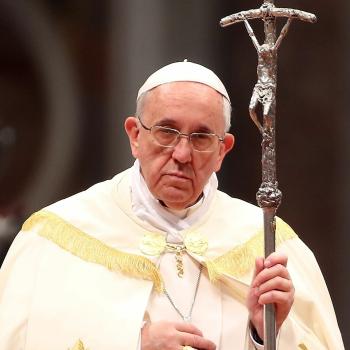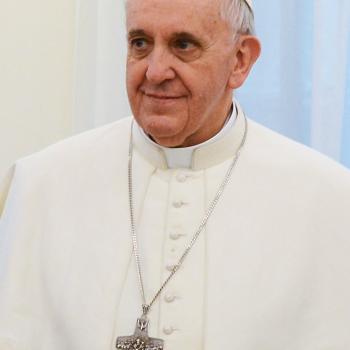Jean Baudrillard, one of the more popular and well known “post-modern philosophers,” inspired many of the themes found in The Matrix. His reaction to modernity caused him to question many of the foundations which lay behind our present form of society, finding them to contain no inherent meaning. Indeed, he found that modern society was fundamentally living in hyperreality, an unreal simulation of life, and if we explored it in any depth, we would discover that what we believe to be real is merely an illusion. This often leads him to profound thoughts, such as these, from his work, Fragments: Cool Memories III 1990 – 1995, trans. Emily Agar (London: Verso, 2007):
The obsession with becoming slimmer and slimmer is an obsession with becoming an image, and therefore transparent, an obsession with the disembodied ideality which is that of film stars. Disembodiment is the price paid for immortality, extreme slimness being the only way to pass through death (5).
Everywhere amnesties and the laundering of scandals, the laundering of fake bills. But it is not certain that the bill for this laundering, like the bill for the collective mind-bending that accompanies it, will not one day land up at the establishment’s door. The media and the political class will pay dearly. They are already paying for the secured loan they have drawn on our advance of expectations. They have already lost all credence, all credibility (14-15).
Who are you then, J.B., you who speak of simulacra, but a simulacrum yourself?
Answer: it is because I exist that I can advance the hypothesis of the universal simulacrum and simulation. You who are already unreal cannot envisage the unreality of things. You who are merely the shadows of yourselves cannot advance the hypothesis of transparency (21).The idea that an idea can be stolen from you is meaningless. If it can be stolen from you, that is because it is unimportant. If it can be stolen from you, the fact is that it is not yours (29).
The entire political class infected by the contaminated blood affair. The virus moves even faster round the superstructures of power than it does round the victims’ bodies. Basically, corruption and scandals have no effects on the political class, since it is immunized against real society. But that scandal is an original one, because it breaks down the wall which separates political from civil society, and constitutes an event on account of the invisible contamination — a viral event, for want of social violence, which is no longer capable of constituting an event (46).
‘Liberated’ East Berlin exports to the West its sexual promiscuity, which thrived in the shadow of a dictatorship, and consequently, AIDS too, in the form of a contingent of unregulated prostitutes. The West, by contrast, exports its stereo-video-porn to the East, the image and simulacrum of sex, of which those in the East were cruelly frustrated. This is more like a mental AIDS. In this way, the two cultures contaminate each other reciprocally after the fall of the Wall of Shame (51).
A terrorist act like the one that brought the Boeing down on Lockerbie produces an irresolvable dilemma. Either one chooses to stress the operational capacities of the terrorists and, as a result, magnifies their image, or one puts everything down to an accident or a technical fault. But this latter solution is perhaps even more catastrophic, for it is an admission of the failure of the system itself, and every accident then assumes the guise of a terrorist act (54-5).
True compassion is to suffer in silence for others (66).
The last quote reminds me of the compassion of Christ, who, in the end, went to the grave to face the ultimate silence, the silence of Great and Holy Saturday, the silence of death; and this he did out of his love and compassion for humanity.
Perhaps his most profound and influential work is Simulacra and Simulation. There is a wealth of ideas within it, helping us to understand the world we live in, and how it has gone from a realism with meaning to a hyperrealistic world without meaning. How do you try to bring back meaning, reality, the event to the world? For him, terrorism, such as what happened on 9-11, becomes one of the few real events which breaks through the unreality of the hyperreality:
THERE IS A BEAUTIFUL METAPHOR in a video by an artist who pointed his camera at the tip of Manhattan during the entire month of September 2001. He intended to record the fact that nothing happened, to record the non-event. And banality exploded before his camera with the Twin Towers!
In The Shadow Of The Silent Majorities. trans. Sylvere Lotringer, Chris Kraus and Hedi Kholti (Los Angeles, CA: Semiotext(e), 2007), 131.
To understand that hyperreality, to see the unreal situation we live in, it is best to look at one of his best descriptions of modern society; it is where he associates it with Disneyland:
Disneyland is a perfect model of all the entangled orders of simulacra. It is first of all a play of illusions and phantasms: the Pirates, the Frontier, the Future World, etc. This imaginary world is supposed to ensure the success of the operation. But what attracts the crowds the most is without a doubt the social microcosm, the religious, miniaturized pleasure of real America, of its constraints and joys. One parks outside and stands in line inside, one is altogether abandoned at the exit. The only phantasmagoria in this imaginary world lies in the tenderness and warmth of the crowd, and in the sufficient and excessive number of gadgets necessary to create the multitudinous effect. The contrast with the absolute solitude of the parking lot — a veritable concentration camp — is total. Or, rather: inside, a whole panoply of gadgets magnetizes the crowd in directed flows — outside, solitude is directed at a single gadget: the automobile. By an extraordinary coincidence (but this derives without a doubt from the enchantment inherent to this universe), this frozen, childlike world is found to have been conceived and realized by a man who is himself now cryogenized: Walt Disney, who awaits his resurrection through an increase of 180 degrees centigrade.
Thus, everywhere in Disneyland the objective profile of America, down to the morphology of individuals and of the crowd, is drawn. All its values are exalted by the miniature and the comic strip. Embalmed and pacified. Whence the possibility of an ideological analysis of Disneyland (L. Marin did it very well in Utopiques, jeux d’espsace [Utopias, play of space]): digest of the American way of life, panegyric of American values, idealized transposition of a contradictory reality. Certainly. But this masks something else and this ‘ideological’ blanket functions as a cover for a simulation of the third order: Disneyland exists in order to hide that it is the ‘real’ country, all of ‘real’ America that is Disneyland (a bit like prisons are there to hide that it is the social in its entirety, in its banal omnipresence, that is carceral). Disneyland is presented as imaginary in order to make believe that the rest is real, whereas all of Los Angeles and the American that surrounds it are no longer real, but belongs to the hyperreal order and to the order of simulation. It is no longer a question of a false representation of reality (ideology) but of concealing the fact that the real is no longer real, and thus of saving the reality principle.
Simulacra and Simulation. trans. Sheila Glaser (Ann Arbor, MI: The University of Michigan Press, 2007), 12-13.
















